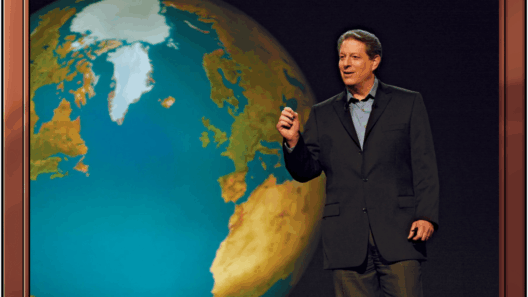Indonesia, an archipelago of over 17,000 islands, is renowned for its rich biodiversity. With its diverse ecosystems that range from tropical rainforests to coral reefs, Indonesia is recognized as one of the world’s most significant biodiversity hotspots. But what if we asked ourselves, “How can we safeguard these vibrant ecosystems in the face of alarming climate change?” The challenge is monumental. Climate change poses severe threats to these intricate ecological systems, necessitating urgent and comprehensive protective measures.
Indonesia’s ecosystems are not merely rich in species but are also crucial for maintaining global ecological balance. Home to approximately 10% of the world’s known species, Indonesia boasts a plethora of flora and fauna, from the majestic orangutan, found in the rainforests of Borneo and Sumatra, to the exquisite coral reefs teeming with life along its coastlines. These diverse habitats play essential roles in carbon sequestration, water regulation, and soil fertility. However, they are increasingly susceptible to the impacts of global warming.
Climate change manifests in Indonesia through rising temperatures, altered precipitation patterns, and escalating sea levels. These phenomena jeopardize not only the biodiversity within these ecosystems but also the communities that depend on them for livelihoods. The consequences of such environmental shifts can lead to habitat destruction, increased frequency of natural disasters, and declining resources for local populations. Herein lies the paradox; while local communities are the stewards of biodiversity, they are often the first to feel the brunt of environmental degradation.
As the global temperature continues to rise, Indonesia’s unique ecosystems face unprecedented threats. The tropical rainforests, a vital habitat for countless species, are increasingly vulnerable to deforestation driven by agriculture, logging, and mining. The Greenhouse Gases emitted from these activities contribute to global warming, accelerating the very processes that are endangering these natural treasures. But how do we combat such a multifaceted challenge?
Conservation efforts in Indonesia must become more comprehensive and holistic. This involves not only establishing protected areas but also integrating sustainable practices within local communities. Initiatives such as eco-tourism can provide economic incentives for preserving natural habitats, thereby creating a symbiotic relationship between conservation and local development. By engaging local communities in conservation activities, we can enhance their resilience against climate change while protecting biodiversity.
The role of education cannot be overstated in this endeavor. Awareness campaigns that highlight the importance of biodiversity and the threats posed by climate change can empower communities to take action. Schools and local organizations can collaborate to promote conservation strategies, such as tree planting and waste management. If young Indonesians are educated on the significance of their ecosystems, they may become more inclined to advocate for their protection, ensuring a legacy of environmental stewardship.
Moreover, international cooperation is critical in addressing climate change challenges on a global scale. Indonesia has participated in various international agreements, like the Paris Agreement, committing to reduce greenhouse gas emissions. However, implementation remains a challenge; financial and technological support from developed nations is paramount for Indonesia to achieve its ambitious environmental goals. Collaboration can spur innovation, enabling Indonesia to adopt renewable energy solutions and sustainable practices that reduce reliance on fossil fuels.
Yet, despite these efforts, the reality is that biodiversity loss is accelerating at an alarming rate. The International Union for Conservation of Nature (IUCN) has categorized many species endemic to Indonesia as vulnerable or endangered. The Sumatran tiger and the Javan rhinoceros are examples of species teetering on the brink of extinction, highlighting an urgent need for action. Can we afford to let these keystone species vanish from our planet?
In addition to terrestrial ecosystems, Indonesia’s marine environments require immediate attention. The coral reefs, often dubbed the “rainforests of the sea,” are vital for biodiversity and coastal protection. Yet, they are under severe threat from ocean acidification, a direct result of increased carbon dioxide emissions. As the oceans absorb carbon, they become more acidic, impacting coral health and the myriad species that depend on these habitats for survival. Protecting marine biodiversity is not optional; it is essential for the health of our oceans and, subsequently, our planet.
Integrating adaptation and mitigation strategies becomes imperative. Rehabilitating degraded landscapes, restoring mangroves, and implementing sustainable fishing practices can bolster resilience against climate change. Such initiatives enhance biodiversity and provide essential ecosystem services, such as coastal protection and carbon storage. By adopting integrated coastal management practices, Indonesia can protect its marine and terrestrial biodiversity while fostering economic activity.
Ultimately, protecting Indonesia’s biodiversity hotspots from the ravages of global warming is a shared responsibility. It encompasses not only the Indonesian government and local communities but also the global community at large. Environmental activism, sustainable practices, and international cooperation must intertwine to foster a resilient future. As we ponder the question of how we can safeguard these natural treasures, let us be reminded that our actions today will forge the path for future generations. The time for dialogue is over; the time for action is now.
In conclusion, Indonesia’s biodiversity hotspots serve as critical bulwarks against the consequences of climate change. Each species within these ecosystems plays an irreplaceable role in maintaining the balance of our planet. Protecting them is not merely a local obligation; it is a global imperative. As stewards of the Earth, the question remains—are we ready to rise to the challenge and ensure that our actions today secure a thriving tomorrow for our ecosystems and all the life they support?








